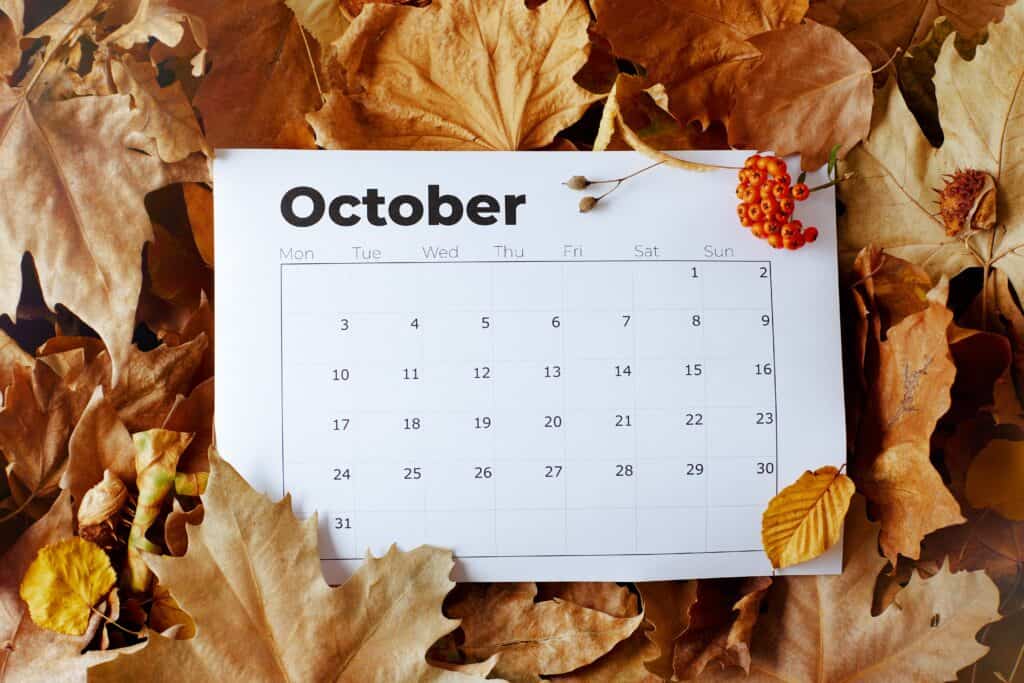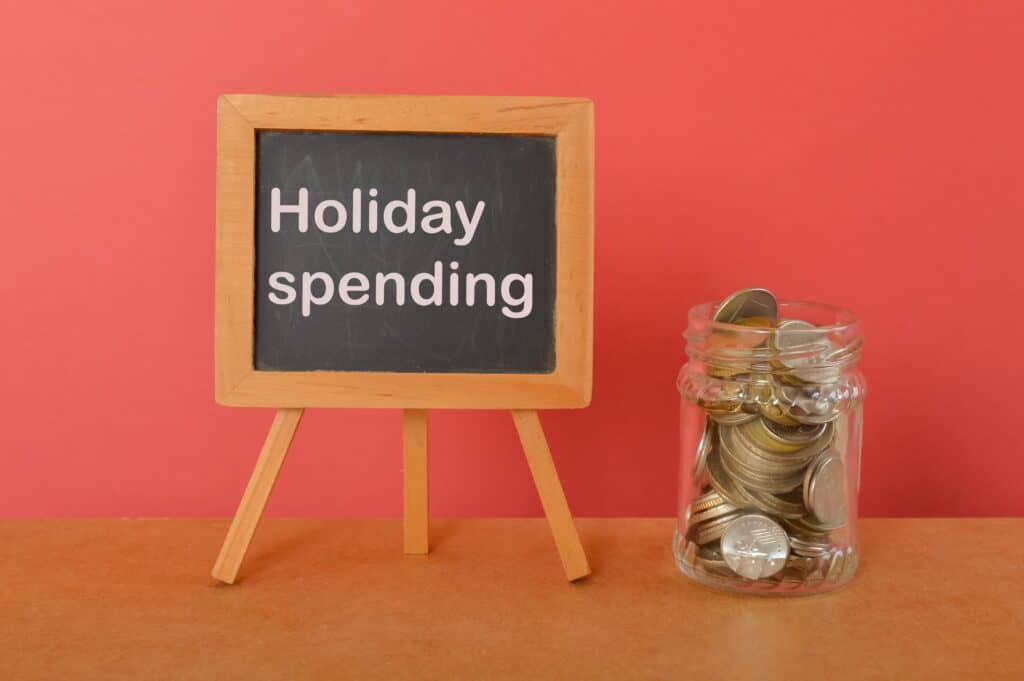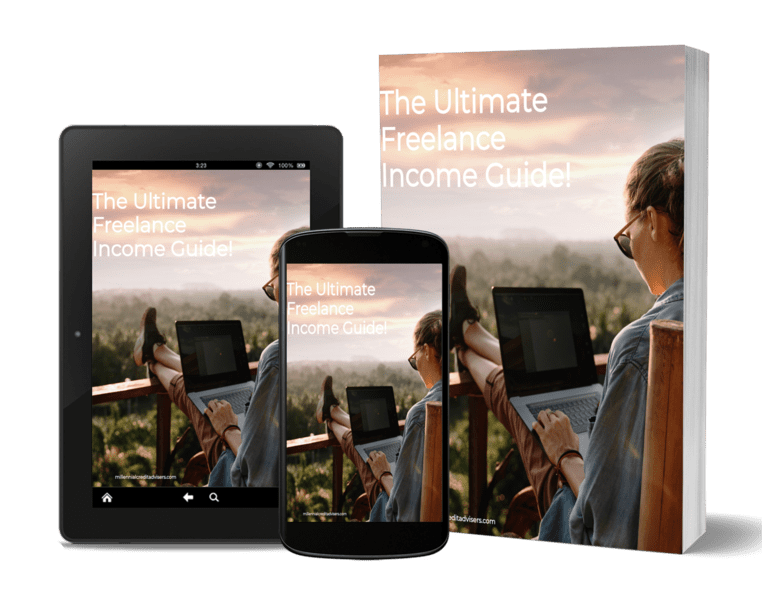Reset Your Budget & Reset Your Life—a Complete Fall Financial Audit to Prepare for Holiday Spending and Year-End Money Goals. FIND OUT MORE IN OUR LATEST ARTICLE!
THIS ARTICLE MAY CONTAIN AFFILIATE LINKS, MEANING I GET A COMMISSION IF YOU DECIDE TO MAKE A PURCHASE THROUGH MY LINKS AT NO COST TO YOU. PLEASE READ MY AFFILIATE DISCLOSURE FOR MORE INFO.
Table of contents
- Reset Your Budget & Reset Your Life—a Complete Fall Financial Audit to Prepare for Holiday Spending and Year-End Money Goals. FIND OUT MORE IN OUR LATEST ARTICLE!
- Why Fall Is the Perfect Time for a Financial Reset
- Reset Your Budget & Reset Your Life: A Step-by-Step Approach!
- Introducing the Autumn Audit Toolkit
- Essential Tool Purchases to Enhance Your Autumn Audit Toolkit
- Creating a Cozy Atmosphere for Mindful Money Management
- Setting Achievable Fall Financial Goals
- Building Lasting Financial Habits for Every Season
- Get Financially Cozy This Fall
- Conclusion: When Should You Start A Complete Fall Financial Audit To Prepare For Holiday Spending?
Summer spending can leave you feeling overwhelmed, but fall offers a great opportunity to regroup and get back on track. As the leaves change, so can your money habits and goals.
The months from September to November give you time to reevaluate what’s working before the holidays impact your finances.
Taking charge of your finances in the fall isn’t just about bigger bank balances — it brings real peace of mind and builds better habits for the whole year.
A financial reset means more than just slashing expenses; it’s about taking a step back and reviewing your income, spending, savings, and debts. This helps you make decisions that match your values.
The Autumn Audit Toolkit breaks this down into doable steps, so you don’t get stuck in financial overwhelm. Simple tools and a cozy environment make the process less stressful.
Honestly, a few strategic tool buys can make budgeting way more organized, and maybe even a little enjoyable.
Key Giveaways
- Fall’s the ideal time to reset your finances before holiday spending starts.
- A real audit means examining all aspects of your financial life, not just cutting back.
- Simple tools and a comfy vibe make budgeting more sustainable.
Why Fall Is the Perfect Time for a Financial Reset

Fall brings a natural shift. People move from summer fun to planning for the year’s end, and that shift can spark real momentum for financial change.
The season brings mental clarity, and it’s honestly a critical window before the holidays ramp up.
The Unique Opportunity of the Autumn Season
September feels like a “financial new year” for many people. Kids head back to school, vacations wind down, and routines settle after the summer blur.
This is your window to check your budget. With three months of summer spending to look at, you can spot problems and tweak things before the holidays take over.
Fall’s financial perks:
- Steady routines
- A clear look at your summer spending
- Time to make changes before the holidays
- The push of a new season
That back-to-school vibe isn’t just for kids. Adults can also benefit from a boost of focus and energy for their financial goals.
Many workplaces schedule annual reviews and salary talks in the fall, so it’s a good time to factor in any income changes.
Psychological Benefits of a Seasonal Money Refresh
As the weather cools and days grow shorter, people naturally turn inward and focus on tasks such as budgeting and planning.
Fall tends to bring out the urge to organize — closets, garages, finances, and more. That “nesting” energy is perfect for getting your money in order.
Why fall motivates a reset:
- Fresh start feeling from the season
- More focus as the vacation mindset fades
- Nesting instincts that include wanting financial security
- The looming deadline of the holidays
Autumn puts some distance between you and those summer splurges, so you can look back without beating yourself up.
Research shows people make better financial choices when they feel in control. Fall’s routines help create that sense of stability.
Prepping for the Holiday Spending Spike
The holidays can bump up spending by 15-25% between November and January. If you start prepping in September, you’ll thank yourself later.
Early planning keeps you from starting the new year in debt. Families can set realistic limits and save up for gifts and celebrations.
How to prep for holiday costs:
- Create a separate savings fund for the holidays.
- Look up gift prices and watch for sales
- Plan meal and guest budgets.
- Don’t forget travel and time off work.
October’s your last whole month before holiday spending kicks in. If you start now, you have time to build an emergency fund or pay down debt.
Savvy shoppers use fall to hunt for early deals and clearance finds. Planning can slash holiday costs by 20-30%, which is not a bad result, right?
Reset Your Budget & Reset Your Life: A Step-by-Step Approach!

To reset your finances, you’ve got to know where your money’s going and set clear goals. This means reviewing your spending, cutting what you don’t need, and building a budget that fits your real life by the end of December.
Assessing Your Current Financial Situation
Start by grabbing three months of bank and credit card statements. Order from Credit Karma. Start your journey to better financial health – Sign up now. You’ll see what’s happening, not just what you think is happening.
Track these numbers:
- Monthly take-home income
- Fixed bills (rent, utilities, insurance)
- Variable costs (groceries, gas, fun stuff)
- Debt payments and interest rates
Jot everything down in a spreadsheet or notebook. Group similar things together, like “dining out” or “subscriptions.”
Look for surprises. You might find you’re spending way more on little things than you realized.
Figure out your debt-to-income ratio by dividing total monthly debt payments by your income. If it’s over 40%, it’s time to make some changes.
Check your credit score using a free service, such as Credit Karma or your bank’s app. Write down the score and flag any late payments.
Identifying Money Drains and Hidden Expenses
Money drains are those sneaky expenses that don’t add much value but keep happening. They’re often hiding in automatic payments or daily habits.
Common money drains:
- Unused gym memberships ($30-80/month)
- Too many streaming services ($10-15 each)
- Bank fees for overdrafts or low balances
- Premium app subscriptions you forgot about
- That daily coffee shop run ($5-7 per day)
Take a close look at your phone and internet bills. Most people pay for more than they need.
Check your subscriptions by scanning for recurring charges. If you haven’t used a service in the last month, cancel it.
The “small purchase” trap can cost a family $300-500 a month. Track every purchase under $20 for a week. Add it up — it’s eye-opening.
Scan your grocery receipts for impulse buys. Shopping without a list can bump up costs by 25%.
Establishing Fresh Budgets for the Fall
Fall budgets should include items such as higher heating bills and the onset of holiday spending in November.
The 50/30/20 rule is a good place to start:
- 50% for needs (rent, utilities, groceries)
- 30% for wants (fun, dining out)
- 20% for savings and debt
First, list fixed costs you can’t avoid. Then add variable expenses based on your real spending.
Adjust your fall budget:
- Bump up utilities by 15-20% for heat
- Add $50-100 a month for holiday gifts
- Drop summer expenses like pool fees or high AC bills
Create separate categories for irregular costs — car repairs, annual insurance, and holiday travel all need their own space.
Set up automatic transfers for savings. Pay yourself first, right on payday.
Use cash or debit for fun spending. This helps prevent credit card debt from accumulating during your reset.
Aligning Financial Goals With Year-End Priorities
Year-end goals are most effective when they’re specific and have a deadline. “Save more” just doesn’t cut it.
Priority goals for fall:
- Emergency fund of at least $1,000
- Holiday gift budget ($500-1,500, depending on family)
- Tax prep savings ($300-500 if you use a pro)
- January bill stash (insurance, property taxes)
Rank your goals. Emergency savings come first. Debt payments typically outperform investing, at least in the short term.
Break big goals into monthly chunks. If you need $1,200 for the holidays, that’s $400 a month from September to November.
Track your progress every week with a simple chart or app. Watching the numbers move can be a motivating experience.
Consider year-end tax moves, such as increasing 401 (k) contributions or making charitable donations. These affect your take-home pay, so fit them into your new budget.
Stay flexible. Life happens, especially in the fall. Adjust your goals as needed so you don’t ditch the whole plan at the first surprise expense.
Introducing the Autumn Audit Toolkit

The Autumn Audit Toolkit gives you everything you need to reset your finances before the holidays. Each tool works in conjunction with the others, creating a comprehensive system for tracking, goal-setting, and building better habits.
What’s Included in the Autumn Audit Toolkit
The toolkit comprises five main components, each addressing a distinct aspect of your financial life. Every tool has its job in the reset process.
The Budget Review Worksheet allows you to track your current spending, categorizing costs as fixed, variable, and seasonal. It shows precisely where your money goes.
The Goal Setting Template breaks big financial goals into smaller, manageable steps. There’s room for short-term goals for the next three months and longer-term ones for the new year, plus space to track your progress.
Expense Tracker provides you with daily and weekly sheets to identify spending triggers and patterns. You’ll see where you tend to overspend.
Holiday Budget Planner helps you map out upcoming costs for gifts, travel, food, and fun. The goal: avoid holiday debt.
Monthly Check-in Cards keep you accountable all fall. Each card has reflection questions and action steps, and only takes about five minutes.
How to Use Each Tool Effectively
These tools work best when used in a specific order, spread out over several weeks. Begin by reviewing the budget to lay the groundwork.
Kick things off with the Budget Review Worksheet in early September. Grab three months of statements and fill in all your income and expenses.
Use the Expense Tracker every day for the next two weeks. This captures real-time habits that you might miss just looking at statements. Write down everything, even the small stuff.
After tracking, fill out the Goal Setting Template. Use what you learned to set up to three main goals — more than that gets overwhelming.
Start the Holiday Budget Planner in early October. Research gifts and travel early, and set spending limits before you start shopping.
Every month, take out a Monthly Check-in Card. Review your progress and adjust your plans if something’sn’t working. These check-ins shouldn’t take more than ten minutes.
Printable Templates and Worksheets
All toolkit materials are available as PDF downloads, which you can print at home.
The templates are designed to fit standard 8.5×11-inch paper and work with any printer.
Recommended Tools & Items:
- HP LaserJet Pro M15w Printer for crisp, clear printing
- AmazonBasics 3-Ring Binder to organize all worksheets
- Pilot G2 Gel Pens (pack of 12) for comfortable writing
- Post-it Sticky Notes for quick reminders and flags
The templates use simple black and white designs to save ink.
Important sections stand out with borders and boxes.
You can print as many tracking sheets as you need.
Paper Recommendations:
- Hammermill Copy Paper (500 sheets) for everyday printing
- Cardstock paper for templates used frequently
- Clear sheet protectors for reusable worksheets
Each template has instructions at the top of the page.
The fonts are large and easy to read.
Blank spaces leave plenty of room for notes and numbers.
Essential Tool Purchases to Enhance Your Autumn Audit Toolkit

The right tools make tracking expenses and organizing financial documents a breeze.
Some people prefer planners that align with their budgeting style, while others opt for digital tools that automate the calculations.
Recommended Budget Planners and Journals
Physical planners are great for people who enjoy writing things out by hand.
The Clever Fox Budget Planner tracks monthly expenses and debt repayment, and includes stickers for goal tracking. It runs about $25.
The Erin Condren Budget Book has colorful layouts and expense categories. You can track bills, savings, and spending habits for a full year. It typically costs between $30 and $40.
Dot grid journals offer more freedom than pre-made planners.
The Leuchtturm1917 notebook features numbered pages and an index, allowing you to create custom layouts. Expect to pay around $20.
The Happy Planner Budget Extension Pack adds budget pages and stickers to your existing planner. It fits standard disc-bound planners and costs about $15.
Digital Money Trackers and Calculators
Financial calculators speed up budgeting math and aid in debt planning.
The Texas Instruments BA II Plus handles loan payments and investment returns. Accountants use it frequently, and it costs approximately $35.
The Sharp EL-738C has business and tax functions. You can figure out mortgage payments or savings growth for around $25.
Smartphone accessories make mobile banking more convenient.
PopSockets help you grip your phone while checking accounts, and they cost under $15.
Portable phone chargers, such as the Anker PowerCore 10000, keep your phone alive during long budget sessions. Expect to pay about $25.
Organizational Tools for Paperwork and Receipts
Accordion file folders sort receipts by month or category.
The Pendaflex Expanding File has 21 pockets and labeled tabs, making it easy to organize tax documents and receipts. Prices range from $15 to $25.
Receipt scanners free up space and create digital copies of documents.
The Fujitsu ScanSnap iX100 connects to phones and computers, allowing you to scan hundreds of receipts. It costs around $200.
Label makers help you identify file folders and storage boxes.
The Brother P-touch PT-D210 prints on different tape colors for about $30.
Clear storage boxes, such as Sterilite containers, stack easily and allow you to see what’s inside. A set of three runs about $20 and fits standard file folders.
Creating a Cozy Atmosphere for Mindful Money Management

A comfortable environment can make it easier to focus on money decisions.
The proper lighting, scents, and setup help reduce stress and make budgeting feel less like a chore.
Curating Your Financial Reset Space
Setting up a dedicated space for money management feels more intentional and organized.
Pick a quiet corner or desk away from distractions for financial paperwork and planning.
Essential elements include:
- Clean, organized surface free of clutter
- Good lighting that reduces eye strain
- Comfortable seating that supports good posture
- Easy access to critical documents and tools
The space should feel separate from daily life to create a mental boundary for financial planning.
Keep only the essentials in this area—a calculator, notebook, pen, and a computer or tablet. Too much visual clutter creates noise and makes it harder to focus.
Think about the temperature and noise level. A slightly cool room helps some people stay alert, and less noise means fewer distractions.
Best Amazon Finds: Candles, Desk Lamps, and Comfort Items
Lighting Options:
- LED desk lamps with adjustable brightness ($25-45)
- Warm white bulbs that reduce harsh glare
- Table lamps with soft, focused light beams
Comfort Enhancers:
- Ergonomic seat cushions for better posture ($20-35)
- Small throw blankets for warmth and comfort ($15-25)
- Essential oil diffusers with calming scents like lavender ($30-50)
Organization Tools:
- Desktop file organizers for essential papers ($15-30)
- Pen holders and small storage containers ($10-20)
- Cork boards or whiteboards for visual goal tracking ($20-40)
Candles add a calming vibe, but battery-operated ones are safer around papers.
Pick scents that help you focus, like peppermint or eucalyptus, instead of the super-relaxing ones.
A small succulent or plant brings a touch of life to the space with minimal effort.
Plants can lower stress when you’re deep in financial planning or challenging conversations.
Setting Achievable Fall Financial Goals

Fall seems like the ideal time to set financial targets before the holiday spending rush.
Getting specific about your goals now can help dodge January stress and set you up for the new year.
Short-Term Milestones Before the Holidays
Holiday Budget Creation is the backbone of fall money planning.
List out all expected expenses—gifts, travel, food, entertainment. A realistic holiday budget keeps credit card debt and stress in check.
Most people underestimate holiday costs by about 30%.
Gift spending should cover family, friends, coworkers, and service providers.
Travel expenses include flights, gas, hotels, and meals. Entertainment covers parties, decorations, and special dinners.
An emergency fund boost is crucial before the pricier months arrive.
Experts suggest saving an extra $500 to $1,000 in the fall for surprise expenses or winter emergencies.
Debt Reduction Focus gives you more room for seasonal spending.
Pick one debt to pay down hard—credit cards with the highest interest are good targets to knock out before the holidays.
Long-Term Planning Into the New Year
Year-end tax preparation requires some attention now to save money later.
Gather receipts, review deductions, and think about tax-loss harvesting. Contributing to retirement accounts before December 31st can lower your current year’s taxes.
Next Year’s budget framework begins with an examination of your current spending.
See where you went over or under budget. That info helps set realistic goals for next year.
Investment Review keeps your portfolio on track.
Markets change, so your asset allocation might need a tweak. Rebalancing before year-end keeps risk and taxes in check.
Insurance Evaluation during open enrollment can save you money and improve your coverage.
Health, life, and disability insurance all deserve a yearly review. Changes in family or income might mean it’s time for new policies.
Building Lasting Financial Habits for Every Season

Financial success hinges on habits that work all year, not just during fall resets.
The best money managers create systems that adapt to the seasons but maintain steady progress toward their goals.
Maintaining Momentum After Autumn
Honestly, the trick is stretching that autumn reset vibe through the whole year.
Many people lose motivation by January, especially when holiday bills arrive and resolutions start to fade.
Create seasonal checkpoints every three months.
Block off 30 minutes in January, April, and July for a quick review. These mini-audits catch minor problems before they grow.
Build flexible budgets that adapt to the changing seasons.
Summer vacation funds become winter heating money. Holiday gifts turn into spring home repairs.
Set up automatic systems so you don’t have to think about it:
- Weekly budget check-ins every Sunday
- Monthly savings transfers on the 1st
- Quarterly investment reviews
- Annual insurance policy updates
Track seasonal spending patterns with apps like Mint or YNAB.
Most families spend 15-20% more during the holidays, so plan for those jumps instead of getting blindsided.
The strongest financial habits work whether it’s sunny, snowy, or somewhere in between. Eventually, they become an integral part of life.
Tracking Progress and Celebrating Wins
Tracking progress turns vague goals into tangible achievements.
People who track spending save 12-18% more than those who don’t. That’s a pretty big gap.
Use simple tracking methods that fit your life.
A basic spreadsheet often works better than a fancy app you’ll abandon. Focus on the numbers that matter: income, essentials, savings, and debt payments.
Set milestone celebrations for every win:
- $500 saved: Nice dinner out
- First $1,000 emergency fund: Weekend getaway
- Debt payoff: Special purchase you’ve wanted
- 6-month emergency fund: Vacation celebration
Create visual progress markers, such as debt thermometers or savings charts.
Put them somewhere you’ll see daily. Visual reminders help on tough days.
Review wins weekly by jotting down three financial successes from the past week. The DEBT, SAVINGS, AND CREDIT CHALLENGE may be for you.
That could be skipping a pricey coffee, finding a sale, or making an extra payment. Small wins add up and build confidence.
Monthly photos of your savings account balance can be surprisingly motivating.
Watching those numbers climb feels as good as seeing progress at the gym—or maybe even better.
Get Financially Cozy This Fall

Fall is the perfect time to make money management feel a little cozier.
You can build healthy financial habits that feel as warm and inviting as your favorite autumn traditions.
Realigning Your Money Goals Before the Holidays
The months between September and November provide a natural pause before the holiday shopping chaos begins. It’s a window to look at your finances without the pressure of buying gifts yet.
Smart money realignment starts with three key steps:
- Check your spending habits from the past six months.
- Decide on holiday spending limits before emotions get in the way.
- Set aside a little extra for those surprise seasonal costs.
Conclusion: When Should You Start A Complete Fall Financial Audit To Prepare For Holiday Spending?
September kind of feels like a second New Year, doesn’t it? That mental reset makes it easier to adjust your budget or change your spending habits.
October is the trial run for any new money habits. You can test your updated plan and see how it holds up before the real spending starts.
November is when you get to fine-tune your holiday plans. It’s the last chance to make sure your finances are sturdy enough for winter’s extra expenses.
“Why am I sharing the secrets of ‘Millennial Credit Advisers’ Seven-Figure Financial Audit Secrets?”
Frequently Asked Questions
Fall budget resets provide an opportunity to get ahead of holiday expenses and establish more effective money habits. The autumn audit involves tracking your spending, setting new goals, and utilizing tools to stay organized—even when life gets busy.
How can a budget reset improve my financial health this fall?
A fall budget reset allows you to identify those sneaky spending leaks and allocate your money toward things that matter more. After a summer of fun (and maybe overspending), it’s a good time to rein things in before holiday bills appear.
When you reset, you see where your money’s going. People are often surprised by how much slips away on takeout or random outings.
What steps are involved in an effective Autumn Audit for personal finances?
Begin by gathering three months’ worth of bank and credit card statements. Go through every transaction—yeah, all of them—to get a real picture of your spending.
Then, categorize your expenses into fixed costs, variable expenses, and discretionary items. This makes it clear where your money ends up each month.
Lastly, set some new limits and choose a method to track your progress. Choose goals that won’t make you miserable and that you can stick to through the holidays.
What are the essential tools included in an Autumn Audit Toolkit for budgeting?
You’ll want budget worksheets, expense trackers, and templates for setting goals. Having everything in one place makes it less overwhelming.
Debt payoff calculators are pretty motivating—they show what happens if you throw a little extra at your loans. Seeing progress there can help.
Monthly checklists keep you on track. Regular check-ins catch little slip-ups before they snowball.
How do seasonal changes impact financial planning and budget allocation?
Fall usually means bigger heating bills in most places. You’ll likely need to increase your utility budget slightly.
Holiday costs—gifts, travel, parties—need their line in your budget. If you don’t plan, those expenses can sneak up fast.
You might also need new winter clothes or home repairs. These are the kinds of things you can see coming, so it’s smart to add them to your fall budget.
What are some cost-effective ways to prepare for the holiday season financially?
Open a separate savings account just for holiday stuff. Even a small amount, like a few bucks a week, adds up by the end of the year.
Make a gift list and set limits for each person. If you start early, you can hunt for deals and avoid last-minute panic shopping.
Planning meals and parties ahead of time helps you dodge those pricey last-minute runs to the store. Honestly, the simple traditions usually mean more anyway.
Which budget-friendly financial products on Amazon can enhance my Autumn Audit experience?
Budget planners, such as the “Clever Fox Budget Planner,” help you track income and expenses manually. If you like jotting things down, these physical planners feel pretty satisfying.
Expense tracking binders collect your receipts and financial papers in one convenient location. The “Dunwell Monthly Bill Organizer” comes with pockets for different types of expenses, which is honestly pretty handy.
Desktop calculators with big displays make crunching numbers less of a headache. The “Sharp EL-1197PIII” even prints out transaction records, so you can keep a paper trail if that’s your thing.
Accordion file folders let you sort financial papers by category or month. These expandable folders help keep everything easily accessible when you’re conducting a budget check.
Disclaimer: Millennial Credit Advisers is not a licensed credit service provider or financial advisor. We don’t offer credit repair, debt management, or legal services. Educate yourself on saving, reducing debt, and managing credit for economic improvement. Understand credit reports, scores, and financial products. Consult a financial advisor for personalized advice. Track your progress for a better credit journey.
Written content: Please view our full AI Use Disclosure.
“We improve our products and advertising by using Microsoft Clarity to see how you use our website. By using our site, you agree that we and Microsoft can collect and use this data. Our privacy policy has more details.”














